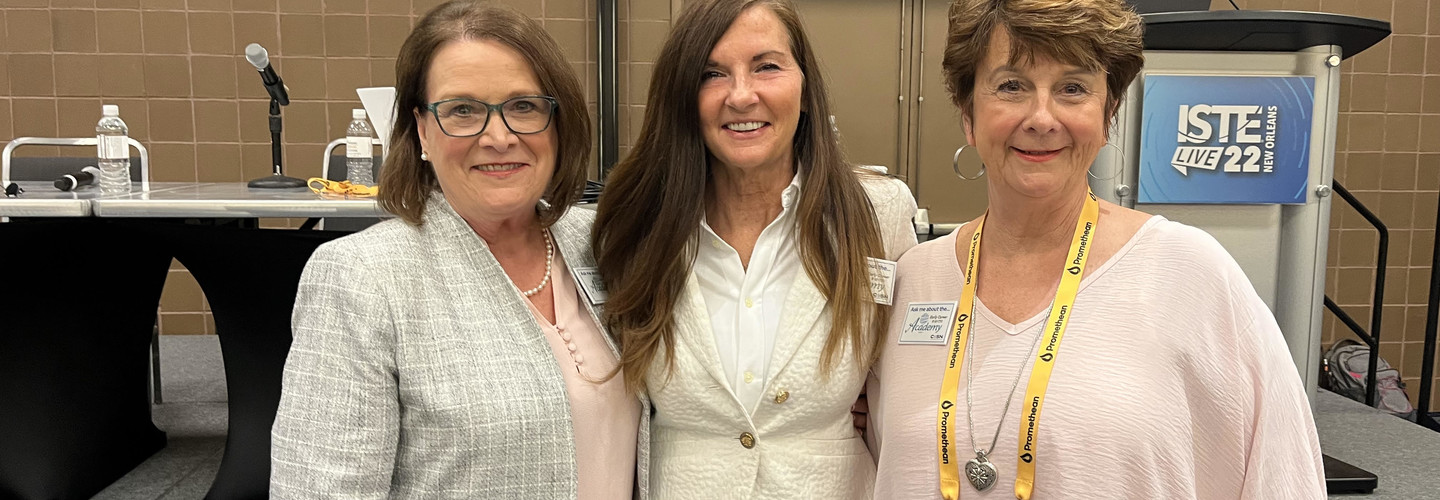1. Build Capacity for Sustainability Over Time
Sheryl Abshire, the former CTO for Calcasieu Parish Schools in Louisiana, urged attendees to “think about your funding limits now. If you’re not working with your board now, do not scare them by telling them, ‘Oh, by the way, we have a refresh next year.’ Build capacity for sustainability over time and prepare them for those funding spikes.”
Frankie Jackson, the former CTO for Cypress-Fairbanks Independent School District in Texas and current director of strategic initiatives with Texas Education Technology Leaders, said this type of planning involves having a vision and translating that vision into overarching goals. “You’ll have to figure out how to take available funding and translate that into learning objectives,” she said.
To be viable, a strategic plan needs to look across the organization, from top to bottom, Jackson added, and also needs to consider key performance indicators and metrics. “If you’re not able to translate results into reality through accomplishments and goals, then funding will very much go away,” she said.
RELATED: These best practices can balance post-pandemic budgets.
2. Take Technology Lifecycle Planning Seriously
For those who have no idea what their technology inventory looks like, now is the time to find out, Williamson said. “Statistically, you’ll never get better than 80 percent of your inventory being accurate,” she said. “But it is critical as we talk about sustainability that you take stock of your core equipment, core services, core software, and find out what you have and when you bought it.”
It’s also important for to determine how long existing equipment is going to last and to understand the impact it has on learning, she said. Once schools have a fairly accurate view of their inventory, IT leaders can begin lifecycle planning.
“You’re going to make the board choke unless you lay out a plan,” Williamson said. “You can’t replace everything at the same time, and the fact is, some devices will get replaced early, some on time and some will be held over.”
She said she knew of a technology director who went to the school board with a budget of 10 years that accounted for inflation. Doing so allowed the board to see and accommodate the big funding curve years.
3. Don’t Ignore the Total Cost of Ed Tech Ownership
According to Jackson, a good sustainability plan also requires projecting into the future. Getting “a true cost of the ownership of technology can end up saving your job. It’ll certainly make you more successful,” she said.
She used a glacier as an illustration, pointing to the line above the water. “That’s the classroom, teachers, computers in use, connectivity and printers. But underneath is 85 percent of your costs,” she said. “We need to look at maintenance, we need to look at replacement for each piece of tech. Those are the costs that we as CTOs must explore.”
LEARN: How routine tech refreshes can save your district money.
4. Help School Boards Make Intentional Cuts by Finding Savings
For school districts facing tight budgets, Jackson said, technology leaders need to make the hard choice of helping school boards make intentional cuts. Savings can be found if technology leaders look for software they may not be using. Jackson said she was shocked to learn that school districts have millions of educational apps in their arsenals.
“Don’t pay a lot of money for something that’s not being used,” she said. “Look for providers who can paint a picture of what digital engagement looks like, and share how the product is connected to educational attainment.”
DIVE DEEPER: Here’s how data analytics tools can show ed tech’s impact.
5. Prove the Value of Your Ed Tech Investments
Session presenters said that another challenge technology leaders often struggle with is proving the value of their technology investments.
The fact is, “you can’t make the assumption that everyone will see the value of an investment,” Williamson said.
This is why technology directors must become particularly skilled in “things you might not be able to quantify. These things may be qualitative in nature,” Jackson said.











